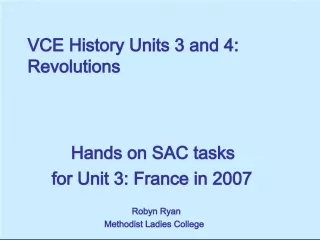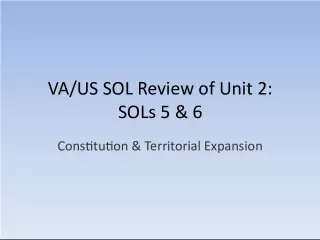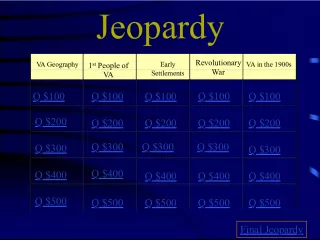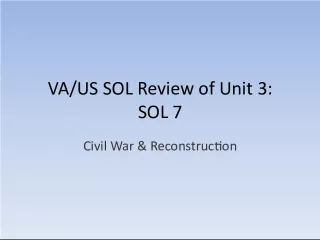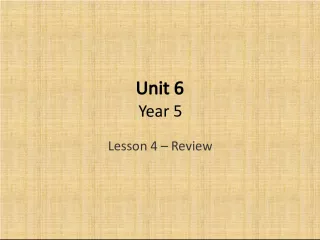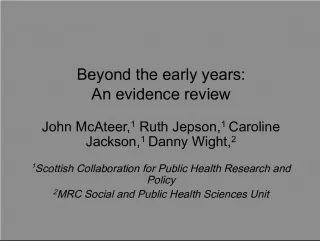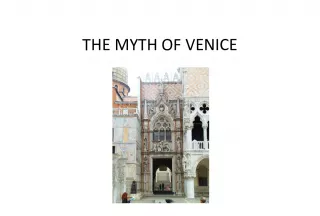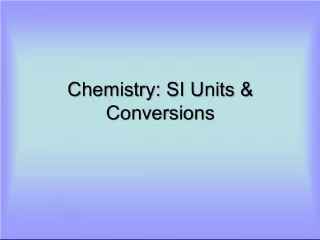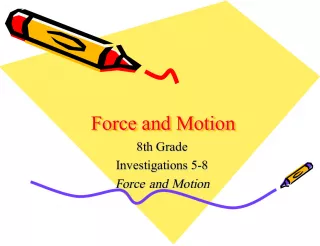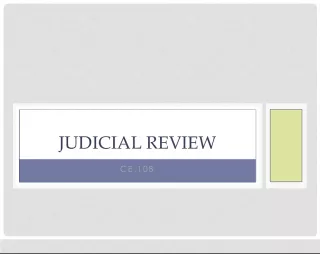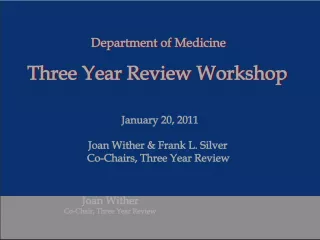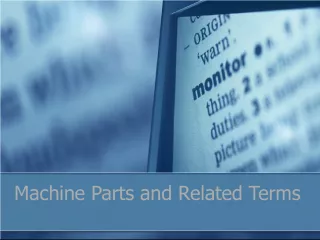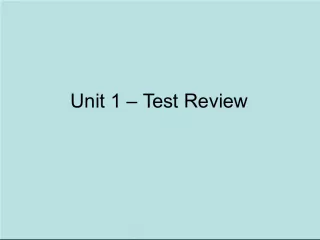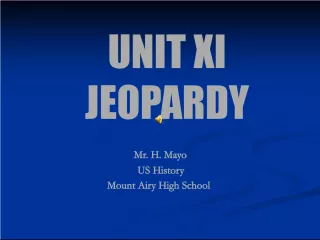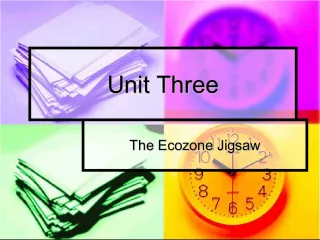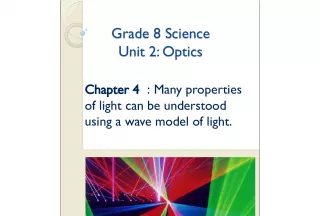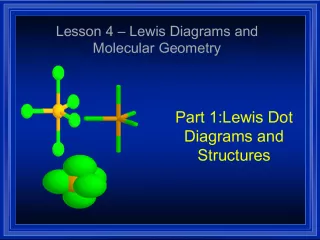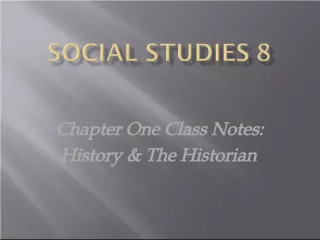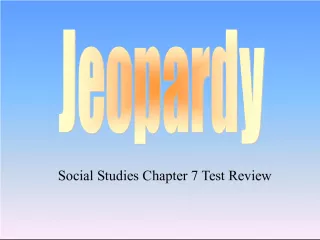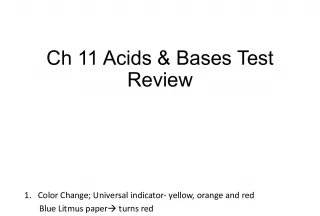US History Unit 3 Review: Revolutionary Era
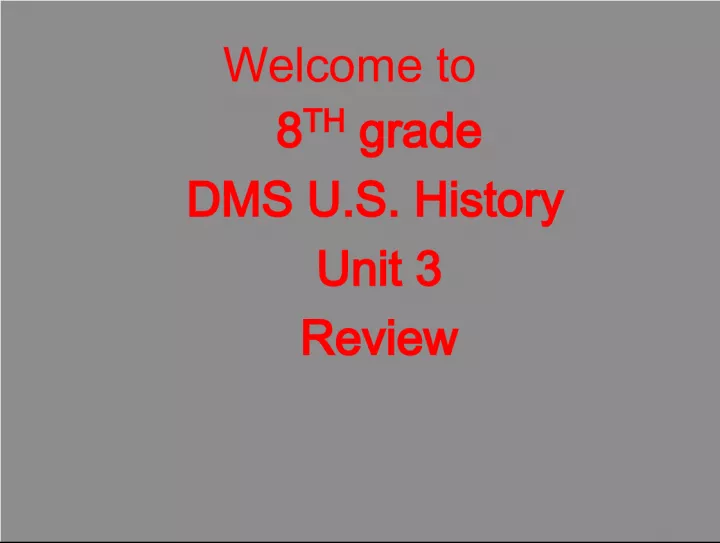

This review covers the major events of the Revolutionary Era including the Stamp Act, Boston Tea Party, and battles of Lexington & Concord, Saratoga, and Yorktown. Topics also include the Proclamation of 1763 and Benjamin Franklin's contributions.
- Uploaded on | 0 Views
-
 prithviprajapati
prithviprajapati
About US History Unit 3 Review: Revolutionary Era
PowerPoint presentation about 'US History Unit 3 Review: Revolutionary Era'. This presentation describes the topic on This review covers the major events of the Revolutionary Era including the Stamp Act, Boston Tea Party, and battles of Lexington & Concord, Saratoga, and Yorktown. Topics also include the Proclamation of 1763 and Benjamin Franklin's contributions.. The key topics included in this slideshow are . Download this presentation absolutely free.
Presentation Transcript
1. Welcome to 8 TH grade DMS U.S. History Unit 3 Review
2. What major era in U.S. History could be identified by these events: stamp act, Boston Tea Party, Battles of Lexington & Concord, Saratoga, and Yorktown Revolutionary Era 8.1a
3. What was the Proclamation of 1763 designed to do? Protect colonist and stop fighting with Native Americans. 8.4a
4. Who published Poor Richard’s Almanac , served as a delegate to the Philadelphia Convention & died in Philadelphia? B e n F r a n k l i n 8.4b
5. What had no chief executive, no national courts, laws need approval of states, congress has the power to declare war & make treaties? Articles of confederation 8.16b
6. What did the thirteen colonies do in 1776? Declared their independence from Great Britain. 8.1c
7. What era in U. S. History had people like Paul Revere, Sam Adams, Patrick Henry working for Independence? Revolutionary 8.1a
8. 8.16b What were the weaknesses of the Articles of Confederation? 1. States held control of interstate commerce. 2. Congress did not have the power to collect taxes. 3. No executive branch of government. 4. All 13 states had to agree to any amendments to the Articles.
9. What economic theory controlled the major European powers from the sixteenth through the eighteenth centuries? m e r c a n t i l i s m 8.4A
10. The Declaration of Independence was written in response to what British action? The Stamp Act 8.4a
11. Thomas Jefferson is to the Declaration of Independence what Thomas Paine is to _______________________ C o m m o n S e n s e 8.4b
12. Lexington 8.4c The first shots of the American Revolution was fired at.
13. The Second Continental Congress’ accomplishments were? 1. S e t u p t h e C o n t i n e n t a l a r m y . 2. C h o s e G e o r g e W a s h i n g t o n t o l e a d t h e a r m y . 3. M o s t i m p o r t a n t w a s t h e c r e a t i o n o f t h e D e c l a r a t i o n o f I n d e p e n d e n c e . 8.4c
14. The Treaty of Paris of 1783 gave the U.S. 1. T e r r i t o r y t o t h e M i s s i s s i p p i R i v e r . 2. F i s h i n g r i g h t s o f f t h e N e w f o u n d l a n d C o a s t . 3. R e c o g n i t i o n o f I n d e p e n d e n c e f r o m G r e a t B r i t a i n . 8.4c
15. The British taxed the colonies to pay for what war? French and Indian War 8.4a
16. The Declaration of Independence includes 1. A statement that the colonies are no longer part of Britain. 2. A list of grievances against the king 3. A statement of natural rights of man. 8.16a
17. The turning point of the Revolutionary War Was. Battle of Saratoga 8.4c
18. The English Bill of Rights expresses some of the same ideas as what other document? Declaration of Independence 8.16a
19. 1. A patriot’s letter 2. An editorial in a newspaper 3. A loyalist painting of the battle These might have a biased account of a battle in the Revolutionary War? 8.30f
20. What also means a complaint or resentment? grievance 8.31 a
21. What is the theory that a nation must protect and increase its home economy by keeping strict control over trade and having a favorable balance of trade? .31a mercantilism
22. Define a confederation type of government. a government made up of many parts in which the individual parts retain most of the power and the central government has very little power. 8.31A
